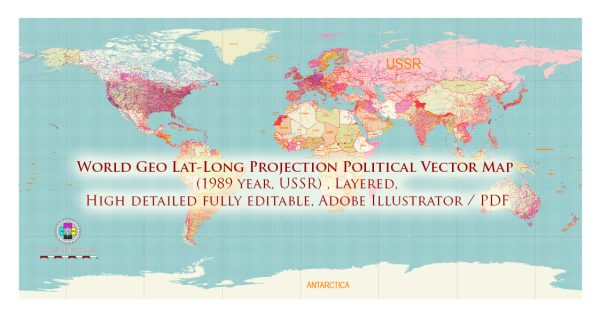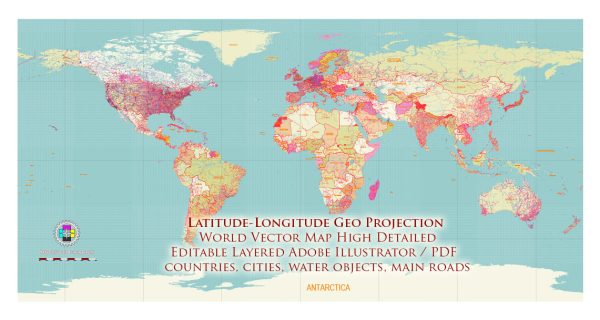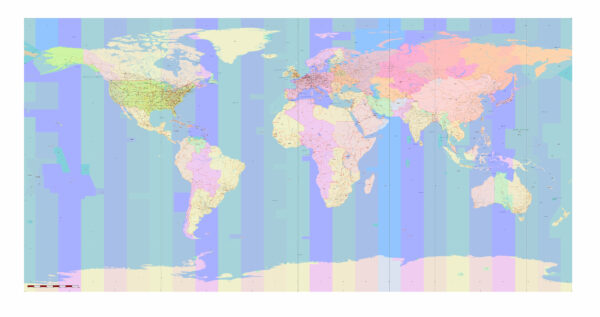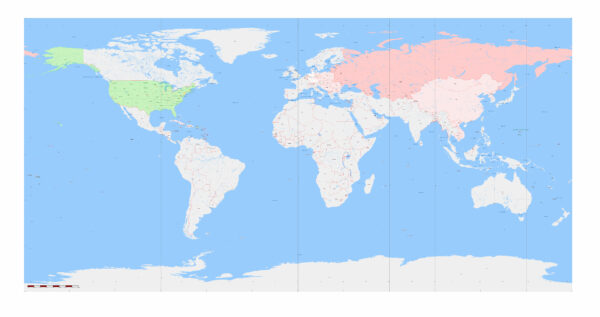A map of the world using latitude and longitude coordinates would typically be presented on a globe or a spherical projection. The Earth is a three-dimensional sphere, so representing it accurately on a two-dimensional map inevitably involves some distortion. Nevertheless, latitude and longitude are the most commonly used coordinates for mapping the Earth’s surface.
In this representation, you can see the Equator (0° latitude), the Prime Meridian (0° longitude), and the lines of latitude and longitude that crisscross the globe. Latitude lines run east-west and measure how far north or south a location is from the Equator, with the North Pole at 90° N and the South Pole at 90° S. Longitude lines run north-south and measure how far east or west a location is from the Prime Meridian, with the International Date Line on the opposite side of the Earth at 180° E/W.
In reality, maps of the world based on latitude and longitude are typically created using various map projections to display the spherical Earth on a flat surface. Some common map projections that use latitude and longitude include the Mercator projection and the Mollweide projection. These projections aim to minimize distortion in different ways, depending on their intended use.





 Author: Kirill Shrayber, Ph.D.
Author: Kirill Shrayber, Ph.D.